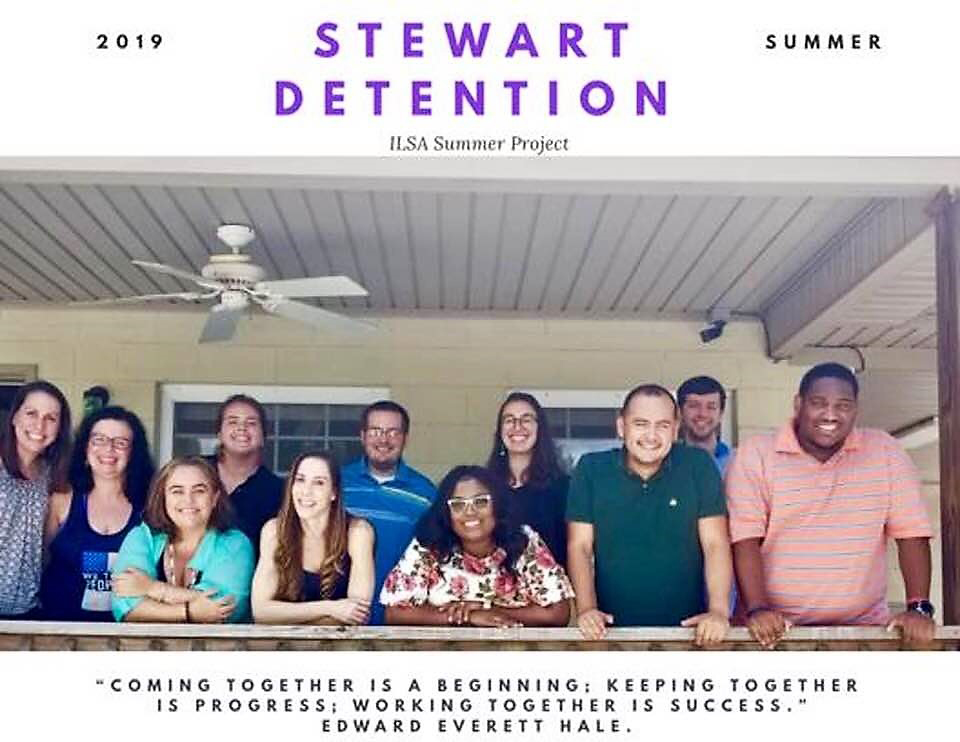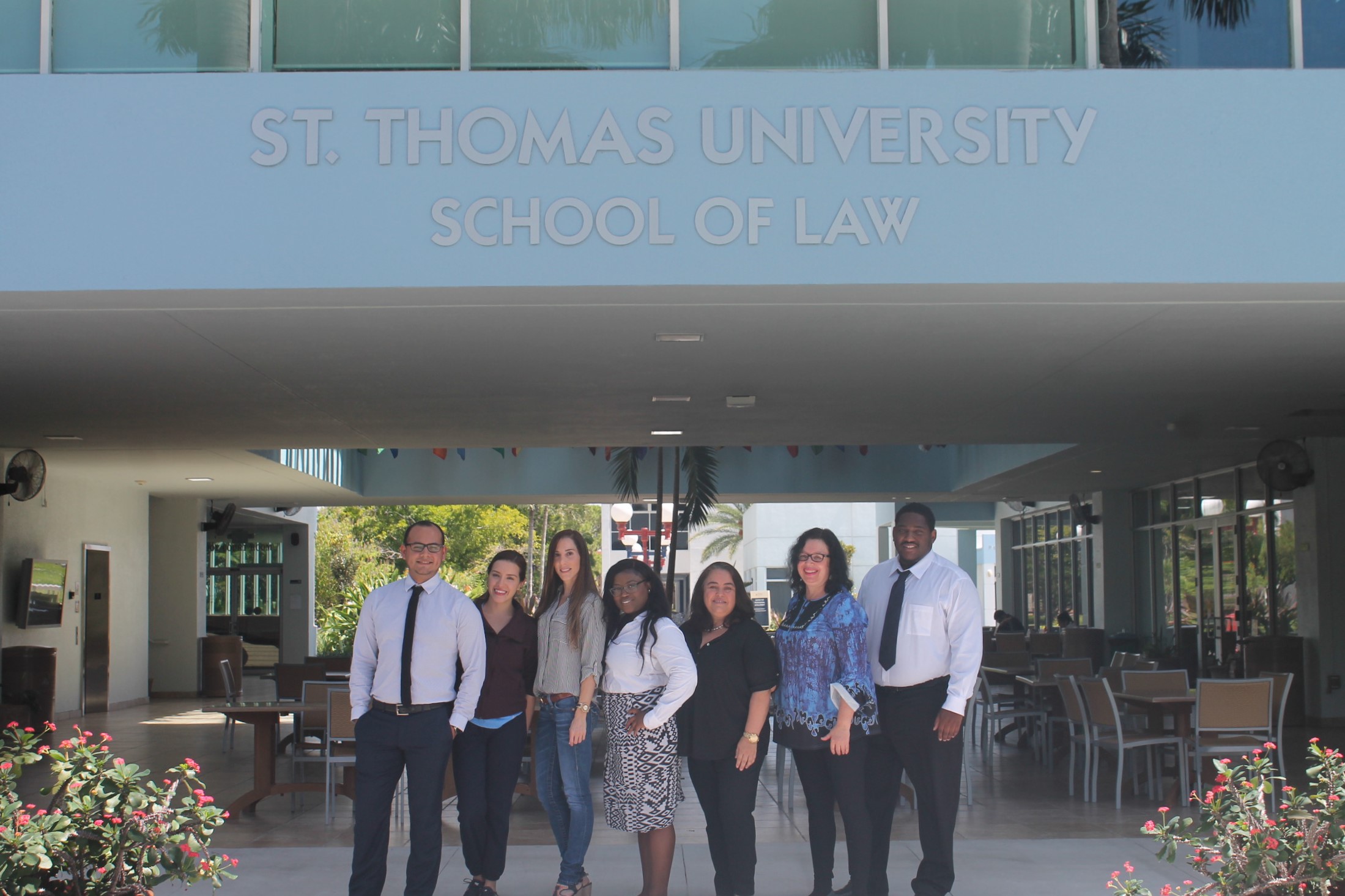
This past summer, Professor Lauren Gilbert and a team of student volunteers from St. Thomas Law’s Immigration Law Student Association (ILSA) traveled to Lumpkin, Georgia for a mission that has become a hallmark of service for our immigration law students. The team spent the week working alongside lawyers and staff from the Southeast Immigrant Freedom Initiative (SIFI) on behalf of immigrants detained at the Stewart Detention Center, one of the largest for-profit detention centers in the country. This detention center holds close to 2,000 detainees and is one of the largest immigration detention centers in the country. It is located in the poorest county in Georgia and, according to the Southern Poverty Law Center (SPLC), has an approximate grant rate of 7% for asylum cases compared to the national average of 43%. There is only one private attorney in the town and most of the detainees lack legal representation. This made the team’s work even more crucial.
This was the fourth such mission for Professor Gilbert; having traveled three prior years with law student volunteers to Karnes Detention Center in Texas; but this was the first such trip to Georgia. The STU Law student volunteers chosen were Marvin Roblero (2L) , Claudia Perez (2L), Marcela Mendoza (2L), Shedwin Eliassin (2L), DeAndre’ Augustus (3L), and Maria Florencia Cornu (3L).
Professor Gilbert noted the differences between the Texas trips and this most recent one. At Karnes, they spent the entire time inside the detention center. In Georgia, she shuttled teams of students back and forth to Stewart, but their home base was the office of SIFI, where they worked alongside attorneys and staff. At Karnes, they helped parents and children who had gone or were going through the credible fear screening process, to determine their eligibility for asylum. Their work was limited to preparing them for their credible fear interviews (CFIs) before an Asylum Officer (AO) and their Immigration Judge (IJ) reviews. At Stewart, which is limited to men and a few transgender women, they saw people at all stages of the process, from recent arrivals, to persons there for years who had just been detained, to lawful permanent residents who had committed some offense that made them deportable.
 Professor Gilbert stated that the experience at the Stewart Detention Center was much less devastating than their work in Texas but no less valuable. From a pedagogical standpoint, the experience was arguably more valuable for the students, who developed a range of skills, from screening clients at initial intakes, to Skyping with them through an interpreter, to preparing bond applications and parole requests, including drafting motions and letters, gathering documentation from family members and sponsors, and doing legal research. In short, the entire team acquired new skills that they could take back with them and transfer to other immigration contexts.
Professor Gilbert stated that the experience at the Stewart Detention Center was much less devastating than their work in Texas but no less valuable. From a pedagogical standpoint, the experience was arguably more valuable for the students, who developed a range of skills, from screening clients at initial intakes, to Skyping with them through an interpreter, to preparing bond applications and parole requests, including drafting motions and letters, gathering documentation from family members and sponsors, and doing legal research. In short, the entire team acquired new skills that they could take back with them and transfer to other immigration contexts.
Although they faced some bumps along the way, including having their free housing fall through two nights before they left, once they arrived, everything ran smoothly and the lawyers and staff at SIFI were outstanding. Furthermore, the Airbnb where they stayed allowed them to escape, decompress and enjoy each other’s company each evening. On the last day, at a final debriefing, each participant compared his or her experience to a rose, where the highs were the flower, the lows were the thorn, and the possibilities for the future were the unopened bud. Several students indicated a commitment to continue to work remotely, which may blossom into a new ILSA project.


